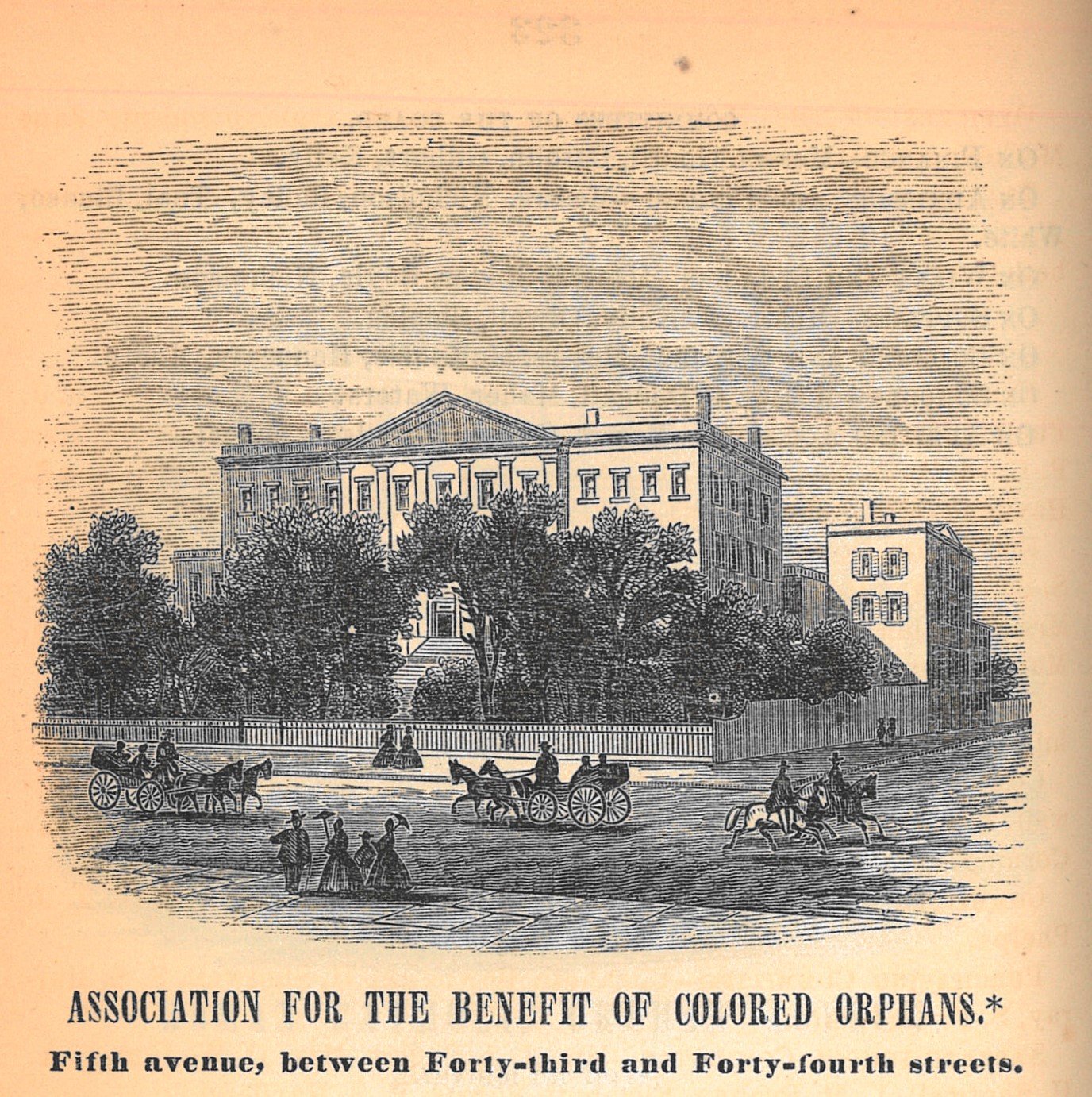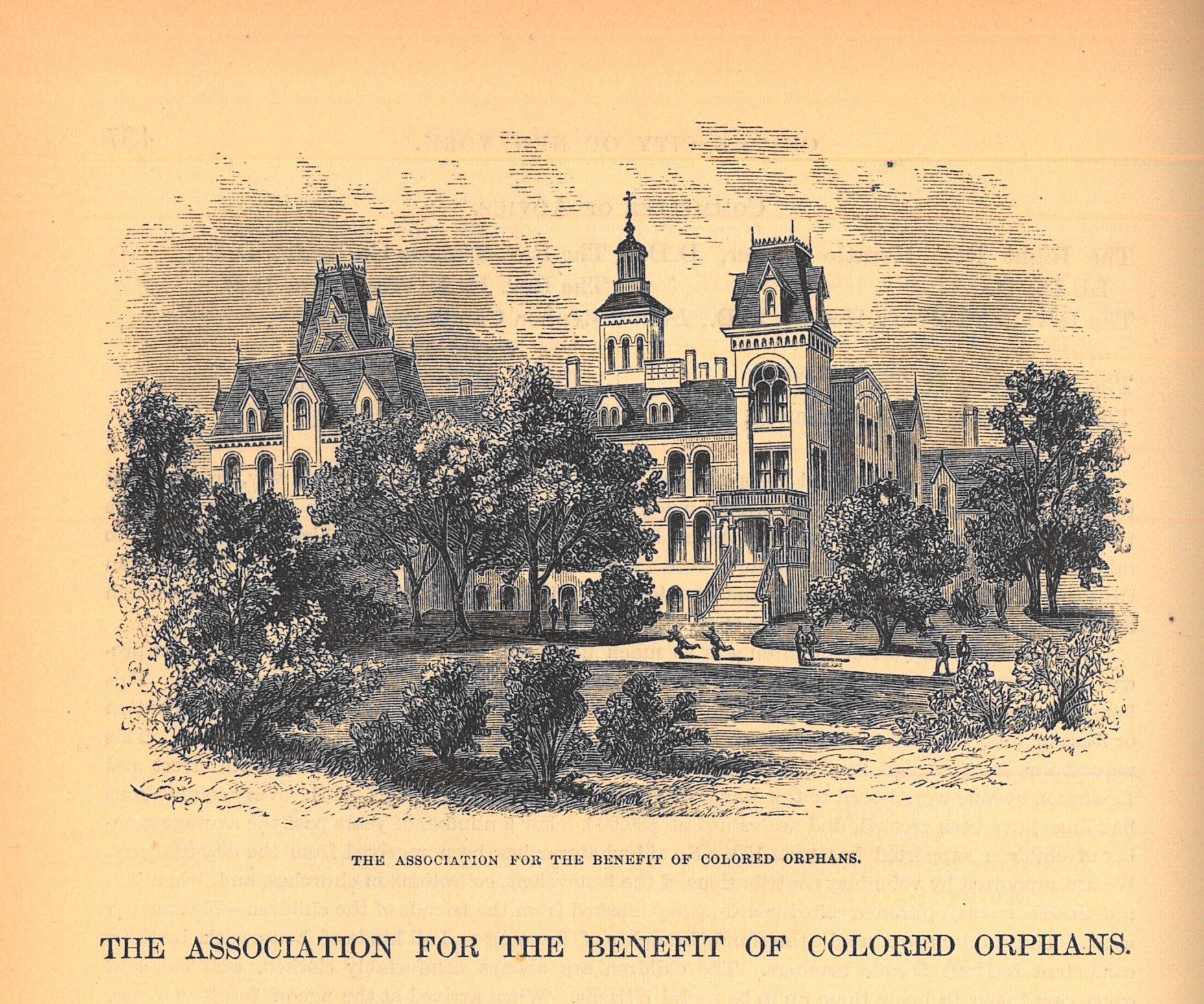Introduction: why archive?
Archives preserve materials for many reasons, some of which are not immediately obvious. It’s certainly true that some archived items have obvious historic importance, such as the Grand Jury indictments for the murder of Malcolm X.
Indictment, People v. Hagan, Butler, Johnson, 1965, NYDA Closed Case File Collection. NYC Municipal Archives.
Other items combine artistic merit with their historic significance, such as Calvert Vaux’s drawings for the design of Central Park.
Danesmouth Arch, Central Park, Rendering, 1859, Department of Parks Drawings Collection, NYC Municipal Archives.
Inventory List, Frederick Johnson, 1863, Draft Riot Claim Collection, NYC Municipal Archives.
Most archival collections derive their value from larger social or political themes that scholars discern in studying otherwise humble-appearing documents, such as a payment claim for losses incurred in the notorious New York City Civil War Draft Riots of 1863.
In three related collections at the New York City Municipal Archives, thousands of cryptic slips of paper bear witness to an enormous but now nearly-forgotten project where dozens of New York City employees labored for years in the service of—you guessed it—Manhattan real-estate records. This is the tale of how New York devoted more than a million person-hours (well, man-hours according to personnel lists) to achieve an apparently quotidian goal: making Manhattan’s property deeds more accessible, in an era where digital searches weren’t possible and using a typewriter to store data was considered technologically advanced. Let’s unpack the story.
The Problem: 600,000 deeds and no single index
Real estate has always ruled Manhattan. By the late 19th century, it was clear that the remaining tracts of open property uptown would soon be developed, and the traditional system of describing property by “metes and bounds”—using descriptors such as a mark cut into the trunk of a large oak tree near the river—was obsolete. Real estate law relies on an unbroken list of transaction records, called a “chain of title,” to assure that someone selling a piece of property is its legitimate owner. The New York State Legislature passed a law in 1891 requiring all subsequent real estate transactions in New York City to use a new block-and-lot system to describe property—the same one used today—but it failed to reckon with 200 years of conveyance records. How to take the 600,000 accumulated deeds, called “conveyances” that were stored in 2,000 fat volumes in the office of the City Register, and convert them to the block-and-lot system?
Furthermore, those old records weren’t organized geographically: the volumes (called “libers”) had been filled sequentially as deeds were brought to the City Register for filing and were indexed volume-by-volume based on the names of the buyers and sellers. Searching through these thousands of volumes was the province of title searchers. Title companies, frustrated with the primitive and archaic system of deed indexing, created their own proprietary indexes which made their searches more efficient and reliable—but assured that access to these public records was for all practical purposes controlled by private firms!
Deed, 1804, Office of the City Register.
The Solution: Reindex
In 1910 the state legislature addressed the problem by directing the office of the City Register to create its own index of real estate “instruments” that filled the gap between 1891 and the earliest recorded land grants of the 17th century, and to establish trustworthy title chains. The law allocated $100,000 per year for the task, which was expected to take a decade to complete. The City Register created a dedicated Reindexing Department and hired nearly 80 men at salaries ranging from $1,000 to $1,320 per year. The team was put to work preparing summaries of each deed, called an abstract. Once an Abstractor made sense of the deed description and summarized it on a slip of paper, a Locator interpreted the description and attempted to superimpose it on a modern block plan of Manhattan. Once located, a Draftsman drew a map summarizing the work of the Abstractor and the Locator. The work was checked by Examiners and finally signed off by the Chief Surveyor. An elaborate system of review was implemented because the City Register recognized that this was an effort that would never be repeated—it had to be done right the first time. Old property deeds were notoriously difficult to interpret—and often were a challenge just to read!
Abstracting slip from the Reindexing Department, NYC Municipal Archives.
And yet just three years after the work began in January 1911, outgoing Register Max S. Grifenhagen called reporters into his office and announced that the index, “more comprehensive, more perfect, more exact than is to be found in any other large city in the world,” was complete.(1) The new index was organized geographically and took the form of 12 x 17.5-inch pages (typists were paid 25 cents for each completed index page) filled with chronologically-ordered conveyance data. Manhattan was divided into “key blocks,” each encompassing several city blocks. Every key block featured its own conveyance index with verified liber citations as well as a map showing the names of early owners during the period when Manhattan land was still owned in large pieces called “tracts.”
Key block map and page from a reindexed block on the Upper West Side of Manhattan, NYC Municipal Archives.
Between 1914 and 1917, the abstracting work was extended to hundreds of thousands of mortgage records. At the same time, the Reindexing Department turned its attention to working out the boundaries of approximately 200 old “farms and tracts” that had once made up most of the privately-owned property above 14th Street. Many of these bore familiar names from Manhattan history: Dyckman, Stuyvesant, Delancey, Astor, Roosevelt. The old conveyance deeds did not contain sufficient information for this task, so the team also drew upon “records on file in the various city departments, historical societies, libraries and in the offices of Trinity Church, Trustees of Columbia College, Sailor’s Snug Harbor and many other similar offices.”(2) As the data was gathered in the form of 6.5 x 10-inch slips organized into more than 1,000 “Tract Reports,” draftsmen distilled the information into 46 plates collectively called the General Map of Tracts and Farms, encompassing all of Manhattan. The draftsmen used an interesting system of lettering: the names of owners were written in a mashup of styles and sizes designed to make it easier to distinguish overlapping names.
Tract and Farm Plate 34, R.D. Map Collection, NYC Municipal Archives.
Job (almost) Done!
The Reindexing team still wasn’t finished—they next converted data on each original farm or tract into a narrative document called a Farm History. A Farm History begins with narrative text from 2 to 22 pages long describing the extent of the original property and presenting an outline of the transactions that broke it into pieces. Many of the Farm Histories include one or two beautiful maps superimposing the farm onto a modern Manhattan block map, as well as a kind of descendancy chart akin to a family tree, with landowners’ names presented as if they were generations of children who bought or inherited pieces of the original farm. Each line of descent terminated in a reference to the city blocks that make up the land owned by the most recent names on the chart. In a 1917 summary of the work of this office, City Register John J. Hopper wrote that “a reference to the proper farm history is made in the front of each block,”(3) by which he meant in the conveyance index volumes. This was never done, nor do the farm histories appear to be complete: only about two dozen out of 120 bear approval dates, and many lack texts, maps, or descendancy charts. Genealogist and historian Aaron Goodwin has speculated that World War I may have interfered with the project’s completion.(4)
James W. De Peyster Farm, Farm Histories Collection, NYC Municipal Archives.
Ownership Descendancy Chart for the Dutch colonial era farm of Jacobus Van Orden, Farm Histories Collection, NYC Municipal Archives.
So, How Much of this Stuff is in the Municipal Archives?
This largest output from the Reindexing project were hundreds of index volumes. Those remain in the City Register’s office in Jamaica, Queens, because after more than 100 years, they’re still in active use! The original conveyance libers through 1886 have been scanned and are available online.(5) The Municipal Archives holds three collections at its 31 Chambers Street location:
ACC 1983-037, consisting of large original sheet maps that show the location and boundaries of old tracts and farms together with the names of their owners and Tract Report references.
ACC 1983-038, consisting of approximately 1,000 Tract Reports on slips of paper that were used to create ACC 1983-037 and ACC 1983-039.
ACC 1983-039, consisting of approximately 100 Farm Histories with text, maps and descendancy charts of ownership. The Farm Histories are available on a microfilm in the Reading Room of the Municipal Library at 31 Chambers Street. Please consult the Municipal Archives Collection Guide for additional information about the Office of the City Register Reindexing Department maps, tract reports, and farm histories.
A Final Word
Returning to the theme of modest-looking archival materials that bear witness to colossal efforts made by city employees performing tasks that must have been tedious at best, the efforts of the World War I-era Reindexing Department of the City Register have benefitted generations of property owners, local historians, and—yes—attorneys. The names and addresses of the Reindexing Department team members were published in The City Record along with their salaries and hire dates.(6) A handful were even photographed for a 1913 newspaper story about the department,(7) so let them be anonymous no more!
Members of the Reindexing Department, July 1916, NYC Municipal Archives.
The reindexing team at work in 1913, NYC Municipal Archives.
(1) “Title searching in N.Y. County Simplified.” NY Tribune 21 Dec 1913, page 34.
(2) John J Hopper 1917, Four Years Report Showing the improvements made during the years 1914-1917 in the Register’s Office, of New York County, with recommendations for its future growth and advancement, pages 43-44
(3) Hopper, loc. cit.
(4) Aaron Goodwin. 2016 New York City Municipal Archives: An Authorized Guide for Family Historians, page 104
(5) “United States, New York Land Records, 1630-1975.” https://www.familysearch.org/search/collection/2078654
(6) The City Record 31 Jul 1916 Supplement 9, page 245.
(7) “Title Searching in N.Y. County Simplified,”loc. cit.





























